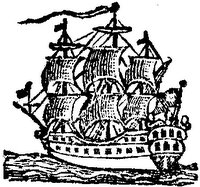“I am in a tremor”
As I wrote before, Henry Belcher published this letter in The First American Civil War but didn’t identify the writer. Books about Dr. Church and his spying didn’t discuss this letter. So I believe these postings are the first time this document has been analyzed in the context of Church’s life.
Toward the end of the letter Church warned his handler about a possible Continental Army attack on Boston, then pushed that off because of the gunpowder shortage:
I am very Certain it has been Concluded on in a Council of War as soon as ever they found Great Britain was determined to push Matters still farther, then they woud attack the Town, but then Sir this determenation was in Consiquence of the News that they had so large a Quantity of Powder close at hand, At present I am full as much persuaded there will be no more done this Season as that there will be, but Sir, this you may rely on I will give you the Earliest notice in my power by this ferry Man that comes over—that you must write me by him if you can trust him to deliver me a line privately which he can if he will.Having laid out his value to the British command, Church then went on to ask for more money, to be sent out by that ferryman as discussed here.
By this point Church had been secretly delivering information to the British command for at least eight months. He had become the surgeon general responsible for the health of soldiers on one side of the siege lines while aiding the army on the other. He had seen war break out and stalemate.
Church was feeling more and more strain, as shown by his attempt to resign from the Continental Army that month and the postscripts to this letter:
N.B.—The poor people that have got out of Boston some time are in great Want Good God what are we to do I know not.Two days after Dr. Church penned this letter, a baker in Newport named Godfrey Wenwood took a document to the Patriot authorities. Some sleuthing revealed that Church had tried to send that ciphered letter into Boston in July. By month’s end, the doctor’s career as both an army surgeon and a spy was over.
Excuse my incorrect manner of writing for I am in a tremor.
Apparently, the immediate prospect of being hanged restored Church’s sang-froid. In October he faced an army court-martial and in November a trial by the Massachusetts General Court, at both tribunals calmly insisting that he was innocent. American authorities never had enough evidence to prove his guilt, but never so little as to clear him.
Over two years later, after a proposed prisoner exchange thwarted by a riot, the state put Dr. Church on James Smithwick’s ship Welcome bound for Martinique. The ship, the captain, and the doctor were never seen again.


